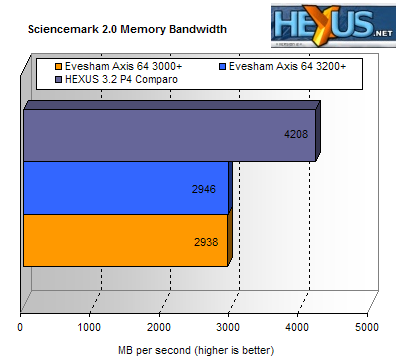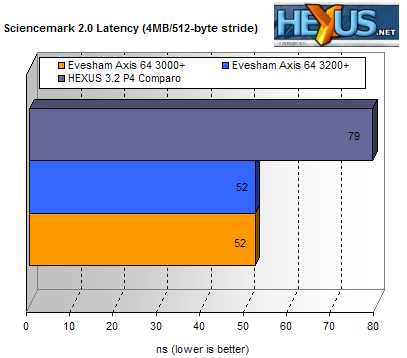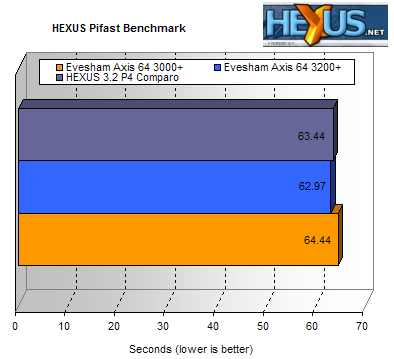System Tests
Before we start with the graphs and commentary, a little note about what to expect from the performance of the Axis 64 3000+. As noted before, the Model 3000+ Athlon 64 runs at the same frequency as the Model 3200+, 2GHz. All that differs between the two processors is the L2 cache size, 1MB for Model 3200+ and half that for the baby 3000+. When cache size doesn't affect performance, the Model 3000+ should perform just the same as the Model 3200+. So look for broadly similar performance to the Axis 64 3200+, especially since they use the same graphics card.A couple of Sciencemark 2.0 tests first, to test memory performance. SM2.0's STREAM test shows us available CPU to memory bandwidth.

Running the same memory at the same latencies at the same frequency as the Axis 64 3200+, it's no surprise to see the same bandwidth figure. We're ~94% efficient here, in the upper end of memory controller efficiency on the market in any system today. Of course the controller is on the CPU, further increasing performance. Here's why.

With the memory controller on the CPU, memory accesses by the CPU are incredibly low latency. The Springdale-PE powered DFI board used in the HEXUS comparison system seems poor in comparison, despite being in the upper end of the performance spectrum when comparing Northbridge based memory controllers. Despite high latency on the modules themselves, the memory controller seeks to do as much to reduce that performance penalty as possible. The Axis 64 3000+ performs just as well as the 3200+ version, everything is running well so far.
Our custom Pifast test is memory latency sensitive, memory controller sensitive and CPU frequency sensitive, all the major system performance factors have an influence. Here we'll see cache size sensitivity as the Axis machines fight it out with identical memory modules and CPU frequencies, their cache sizes being the only difference.

1.5 seconds difference between the Axis systems with it all down to the CPU. The non-PAT enabled Springdale-PE powered comparison system is sandwiched in the middle. Two different avenues to good performance.









